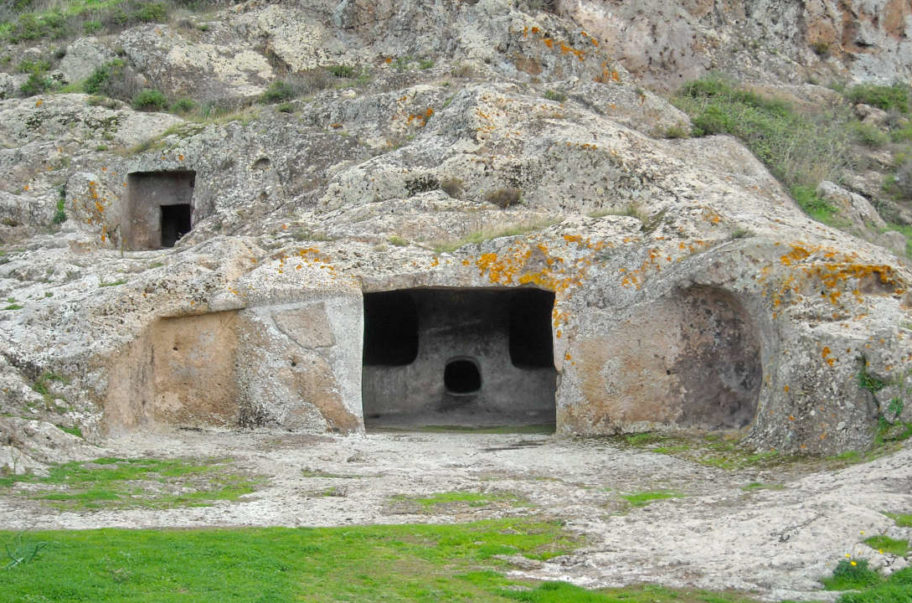Corpo Pagina
The oldest evidence of settlements in the territory of Villaperuccio, a town located in the lower Sulcis, in the province of Sud Sardegna, date back to the Late Neolithic (about 5000 years ago) and are referable to the Ozieri culture.
Among the most interesting archaeological areas there are the village located on the hill called S’Arriorgiu, discovered during the excavation works for the construction of the modern aqueduct, the domus de janas necropolis of Marchiana, the two perdas fittas of Luxia Arrabiosa and of Monte Narcao in the locality of Su Terratzu, the menhirs of Pireddas, Is Melonis, Bacc’e Fraus, Is Faddas and Is Cotzas, but above all the pre-Nuragic necropolis of Montessu, probably belonging to the aforementioned settlement referable to the Ozieri culture.
The necropolis of Montessu stands on the southern slopes of Sa Pranedda hill and constitutes the largest domus de Janas cemetery of the southern portion of the island. It consists of 35 tombs characterized by a great variety of planimetry and dimensions. The simplest are made up of low single-room rooms, the most complex of articulated multicellular chambers. In particular, there are two tombs that stand out for their peculiarities linked to the religious sphere: the “Tomb of the spirals” and the “Tomb of the horns”. The first is decorated with wolf teeth motifs, a bull protome and a series of spirals from which it takes its name, probably symbolizing female fertility; the second, however, is decorated with several pairs of sculpted horns, a symbolic representation of the male divinity power.
From the necropolis, and specifically from the area in front of tomb 5, it comes a terracotta figurine approximately 5 centimeters high, without the head and the lower portion of the body, now ehibited in the Musei Nazionali di Cagliari. The figurine belongs to the cruciform scheme typical of mother goddesses created in the Ozieri culture: it has a plate-like body, winged arms, clearly visible breasts and protruding buttocks. On the surface there are still traces of red ocher, a substance with a very strong symbolic value, which recalls the color of blood and its vital force, as well as regeneration.
The area of Montessu necropolis remained in use since the final Neolithic for about a millennium, until the Early Bronze Age. Evidence relating to the Bronze Age are the remains of around forty small or medium nuraghi and a nuragic hut in the center of the town, near the town hall.
Featured image: Montessu necropolis – ph. credits – Cristiano Cani via Wikimedia Commons

